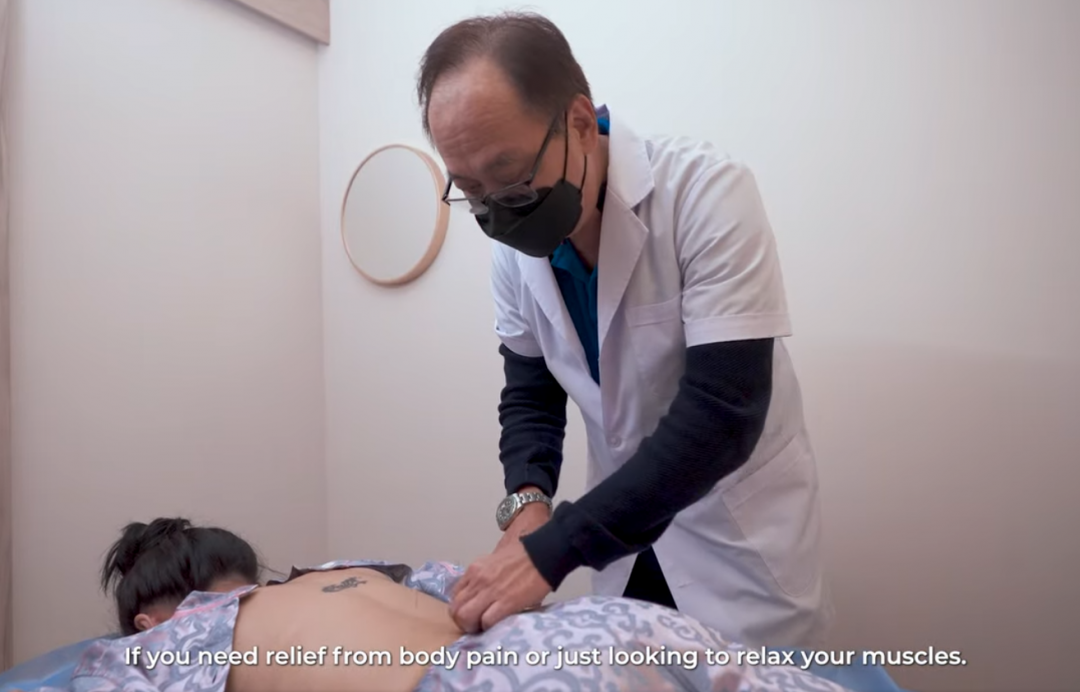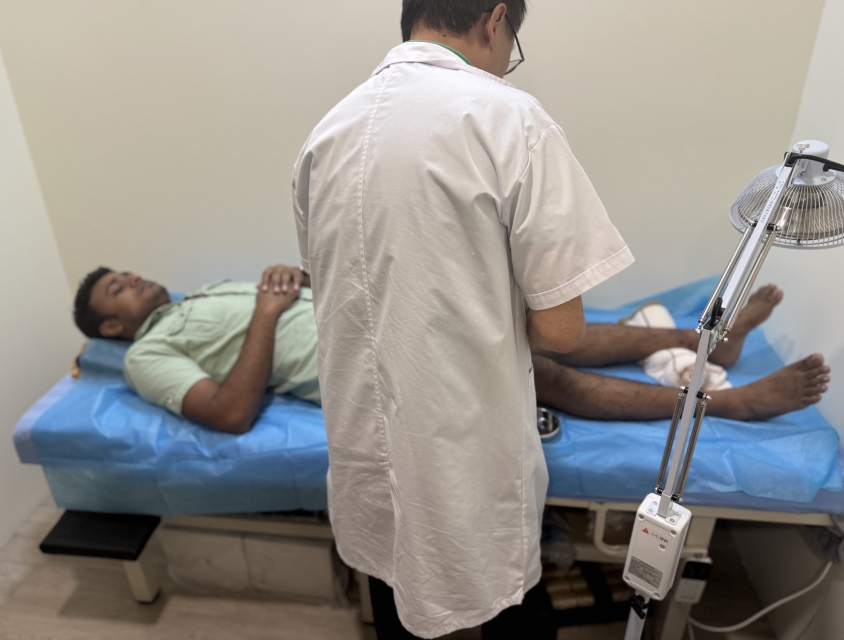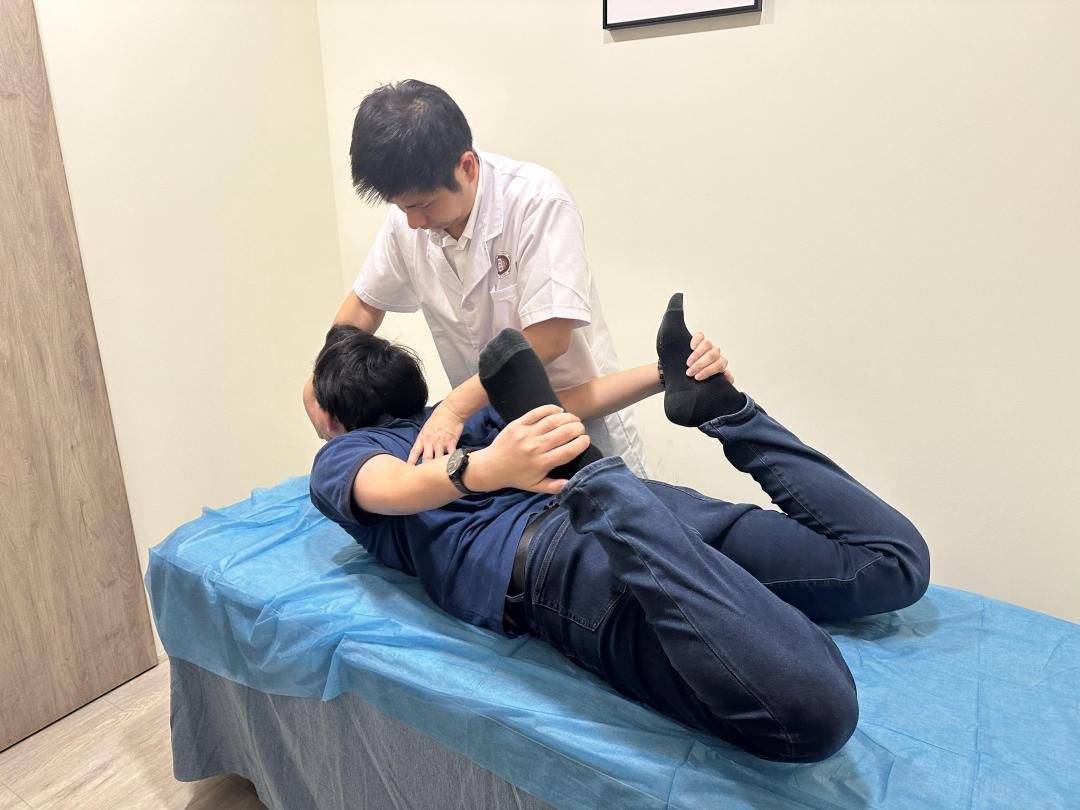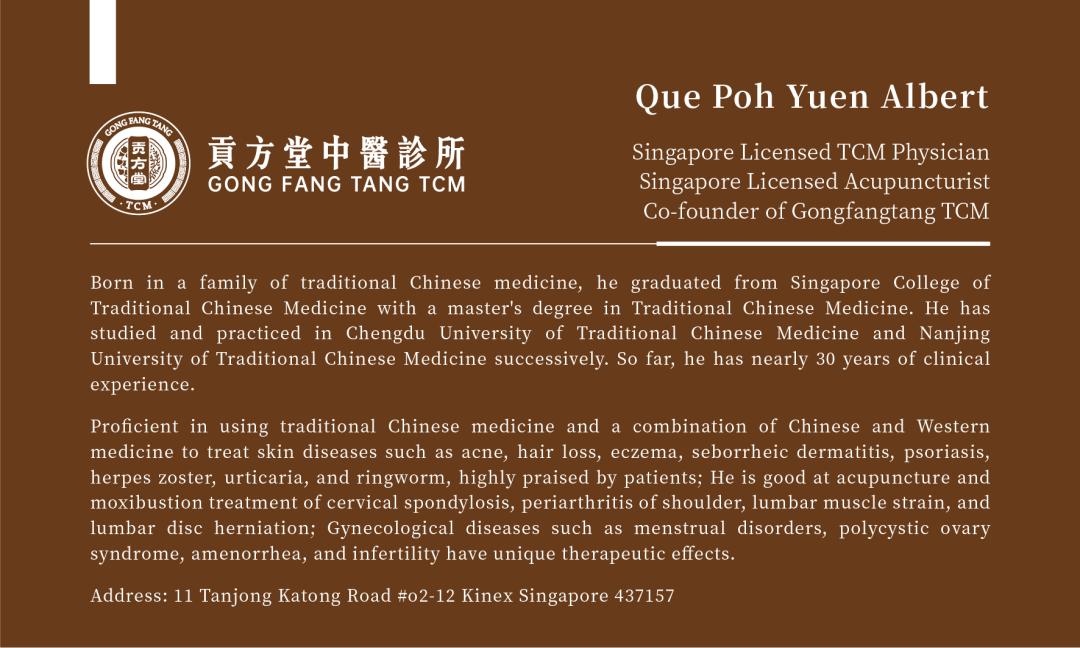In Singapore's fast-paced modern metropolis, people often experience various physical problems due to the pressures of life and work. From office workers confined to their desks to seniors facing functional decline with age, all encounter health challenges to varying degrees. The core of TCM rehabilitation training lies in the principle of "simultaneous treatment of tendons and bones, coordinated regulation of qi and blood." By integrating acupuncture, tuina (therapeutic massage), herbal medicine with modern rehabilitation techniques, it achieves comprehensive improvement—from functional recovery to constitutional enhancement.

Four Core Technologies of Gongfangtang TCM's Rehabilitation Training
Acupuncture & Meridian Regulation
Acupuncture is a key modality in TCM rehabilitation. Gongfangtang's physician Chen Huifang specializes in applying the "Guo Family Acupuncture Technique." For stubborn conditions like lumbar disc herniation and frozen shoulder, she achieves pain relief often within 30 minutes of needle retention by targeting precise acupoints (e.g., Yanglao SI6) combined with the "Dragon-Tiger Conflict reinforcement and reduction technique."
Bone-Setting Tuina & Fascia Release
Addressing common modern ailments like neck, shoulder, back, and leg pain, as well as postural issues, Gongfangtang's bone-setting team employs a "non-invasive reduction + holistic regulation" approach. For instance, with scoliosis patients, physicians assess bone misalignment through palpation and perform corrections using the "Three-Step Reduction Method" (muscle release, joint adjustment, stability reinforcement).
Herbal Medicine & Constitutional Intervention
TCM rehabilitation emphasizes "pattern differentiation and treatment." Gongfangtang's TCM physicians prescribe personalized herbal formulas based on the patient's constitutional type (e.g., Qi Deficiency, Blood Stasis, Phlegm-Dampness). For example:
Post-surgery Qi and Blood deficiency: Modified Bazhen Decoction to tonify Qi and nourish Blood.
Degenerative joint disease: Duhuo Jisheng Decoction to tonify Liver and Kidney.
Integration of Modern Rehabilitation Technology
Gongfangtang incorporates modern equipment like the SET Suspension Training System and balance function trainers, seamlessly blending them with traditional therapies.

Personalized Rehabilitation Training Process
Detailed Assessment, Precise Diagnosis: During the initial consultation, the TCM physician conducts a thorough inquiry into medical history, symptoms, and lifestyle habits. A comprehensive physical examination and TCM diagnostic methods (inspection, listening/smelling, inquiry, palpation) are used to accurately determine the cause and condition, forming the basis for a personalized rehabilitation plan.
Customized Plan, Tailored to the Individual: Based on the assessment, the physician designs a unique rehabilitation plan for each patient, specifying treatment methods, course duration, and precautions. The plan carefully considers factors like age, constitution, and condition to ensure safety and efficacy. E.g.: A young office worker with muscle strain from overwork might focus on tuina massage and rehabilitation exercises; an elderly patient with degenerative joint disease might receive acupuncture, cupping, and moderate exercise.
Professional Guidance, Attentive Service: Throughout the rehabilitation process, TCM physicians and rehabilitation therapists provide professional guidance, ensuring patients correctly perform treatments and exercises. Therapists also offer lifestyle advice on diet and rest, helping patients develop healthy habits to aid recovery. Treatment plans are adjusted promptly based on progress.
Regular Follow-up, Outcome Tracking: Patients attend regular follow-ups where the physician assesses progress and adjusts the plan as needed. This ensures the rehabilitation proceeds smoothly and achieves optimal results.
Suitable Candidates & Program Highlights
Office Workers: Back strain, shoulder/neck stiffness from prolonged sitting.
Sports Enthusiasts: Sports injuries like runner's knee, tennis elbow.
Post-Operative Patients: Functional recovery after fractures, joint replacements.
Middle-Aged & Seniors: Long-term management of arthritis, post-stroke sequelae.

Consultation Tips
Bring medical records and imaging reports to your first visit for a comprehensive assessment.
Rehabilitation requires gradual progression; we recommend 2-3 sessions per week combined with home exercises.
The clinic offers services in Chinese and English for seamless communication.
Key Terminology Used:
TCM (Traditional Chinese Medicine)
Qi (Vital Energy)
Meridians (Energy Pathways)
Tuina (Therapeutic Massage)
Acupuncture Points (e.g., Yanglao SI6)
Bone-Setting (Zheng Gu)
Pattern Differentiation (Bian Zheng)
Constitution (Ti Zhi)
Cupping (Ba Guan)
Degenerative Joint Disease (Tui Xing Xing Guan Jie Bing)
SET (Sling Exercise Therapy) Suspension Training System
